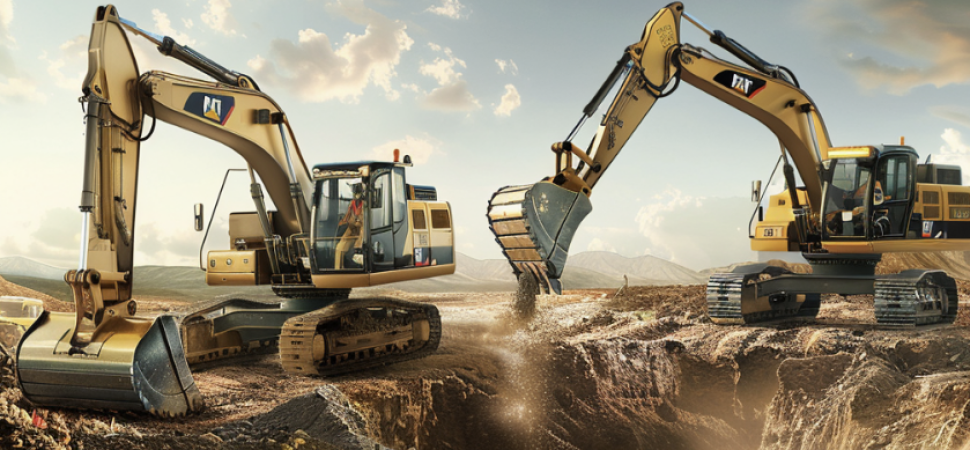Excavators play a crucial role in construction, mining, and various industrial applications. These powerful machines are designed for tasks such as digging, material handling, and demolition. The global excavator market has seen significant growth due to advancements in technology and increased demand for construction activities.
Excavator Classification and Application Scenarios
Excavators are classified based on their size, capacity, and the nature of the work they are designed to perform. Understanding these classifications helps in selecting the right equipment for specific projects, ensuring efficiency and cost-effectiveness.
| Classification | Description | Application Scenarios |
| Mini | Lightweight, compact excavators with limited digging capacity | Small-scale construction, agriculture, landscaping |
| Small | Slightly larger than mini excavators, offering better reach and capacity | Urban construction, forestry, road maintenance |
| Medium | Versatile machines used for a wide range of tasks, moderate digging capacity | General construction, mining, pipeline installation |
| Large | Heavy-duty excavators with high digging power and capacity | Large-scale mining, major infrastructure projects |
| Specialized | Custom-built or adapted for specific tasks like demolition or dredging | Demolition, underwater excavation, specialized mining |
Mini excavators are particularly useful in tight spaces and urban environments, while large excavators are essential for heavy-duty mining operations. Specialized excavators are designed for niche applications, ensuring that there is a machine suitable for virtually any task.
Excavator Industrial Chain
The industrial chain of excavators encompasses several stages, from raw material procurement to manufacturing and distribution. Each stage plays a vital role in ensuring the quality and availability of excavators in the market.
Upstream
The upstream segment involves the supply of raw materials and components essential for manufacturing excavators. Key materials include steel, hydraulic components, engines, and electronic systems. Reliable suppliers and high-quality materials are critical for producing durable and efficient excavators.
Midstream
The midstream segment focuses on the manufacturing and assembly of excavators. This involves the fabrication of components, assembly of machinery, quality control, and testing. Manufacturers invest in advanced technologies and automation to enhance production efficiency and ensure high standards of quality.
Downstream
The downstream segment includes the distribution and sale of excavators to end-users. This involves dealers, rental companies, and direct sales to construction firms, mining companies, and other industrial users. After-sales services, including maintenance and spare parts supply, are crucial for customer satisfaction and machine longevity.
| Segment | Description |
| Upstream | Raw Materials (steel, hydraulics, electronics), Components Suppliers |
| Midstream | Manufacturing (fabrication, assembly, testing) |
| Downstream | Distribution (dealers, rental companies, end-users) |
Number of Chinese Excavators Exported (2019-2023)
China has emerged as a significant player in the global excavator market, exporting a substantial number of units annually. The growth in exports reflects the increasing demand for Chinese-made excavators, known for their competitive pricing and improving quality.
The steady increase in exports from 2019 to 2023 indicates a strong and growing presence of Chinese excavators in international markets. Factors contributing to this growth include advancements in manufacturing technology, aggressive pricing strategies, and expanding global distribution networks.
Excavator Brands in Various Countries
The global excavator market is dominated by several key brands, each known for their innovation, reliability, and performance. Here are some of the leading excavator brands in various countries:
| Country | Top Brands |
| USA | Caterpillar, John Deere, Case, Bobcat, New Holland |
| Germany | Liebherr |
| Japan | Komatsu, Hitachi, Kobelco, Sumitomo, Yanmar |
| South Korea | Hyundai, Doosan |
| China | XCMG, SANY |
| Sweden | Volvo CE |
- USA: Caterpillar and John Deere are renowned for their high-performance machinery, extensive dealer networks, and strong after-sales support.
- Germany: Liebherr is known for its precision engineering and robust construction, making it a preferred choice in Europe and beyond.
- Japan: Komatsu and Hitachi offer advanced technology and high reliability, contributing to their strong market presence.
- South Korea: Hyundai and Doosan have made significant inroads into the global market with their cost-effective and reliable machines.
- China: XCMG and SANY have rapidly gained international recognition, offering competitive prices and expanding their global footprint.
Market Trends and Future Outlook

The excavator market is evolving with several key trends shaping its future. These include:
1.Technological Advancements: Integration of advanced technologies such as telematics, GPS, and IoT to enhance machine performance and efficiency.
2.Sustainability: Increasing focus on eco-friendly and fuel-efficient machines to reduce environmental impact.
3.Automation: Development of autonomous and semi-autonomous excavators to improve safety and productivity.
4.Emerging Markets: Growth in construction activities in emerging economies, driving demand for excavators.
5.Rental Market: Expansion of the equipment rental market, providing cost-effective solutions for short-term projects.
The future of the excavator industry looks promising with continuous innovation and expanding applications across various sectors. Companies that invest in technology and adapt to market trends are likely to thrive in this competitive landscape.




